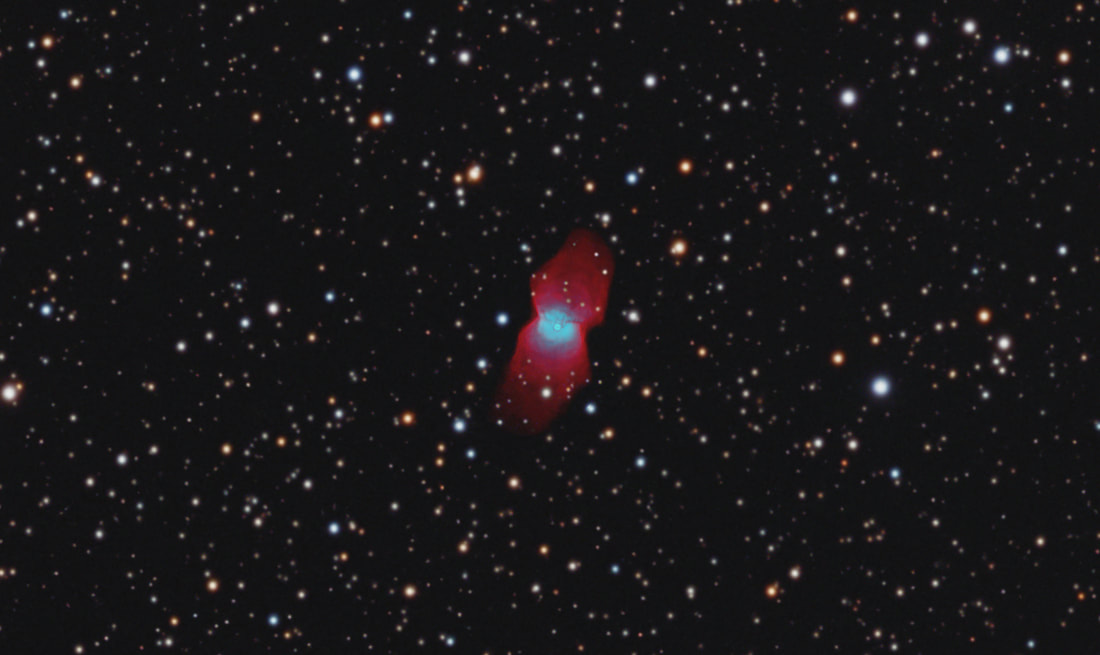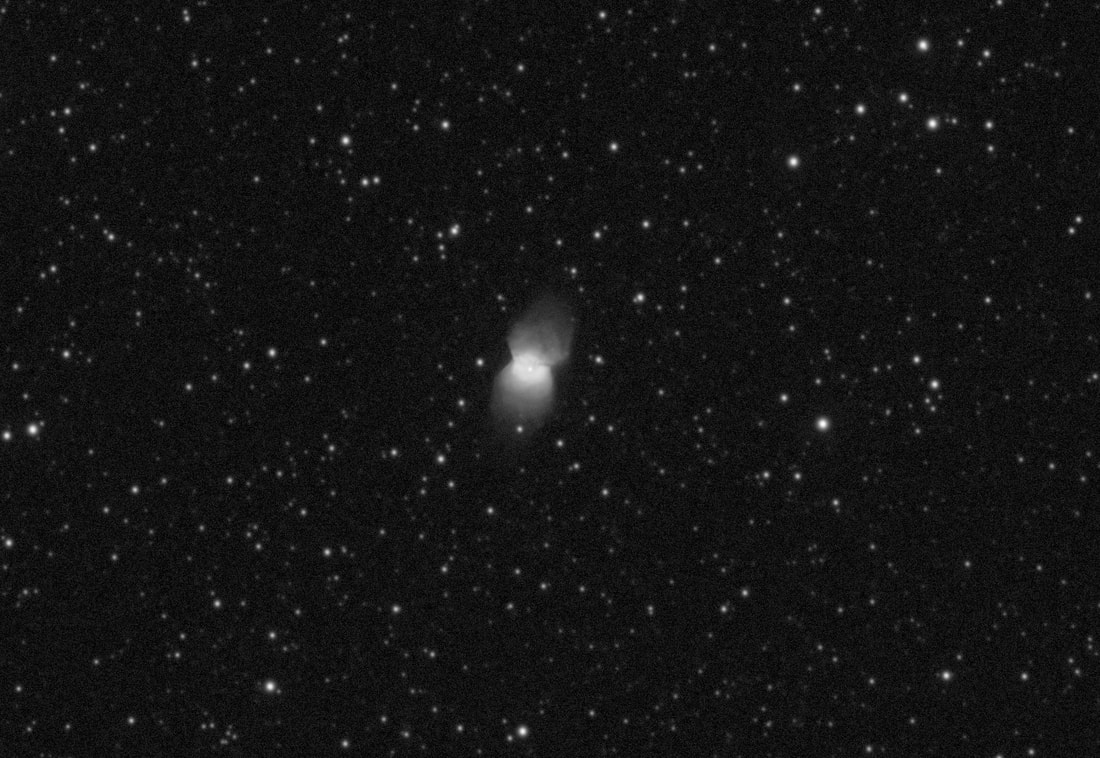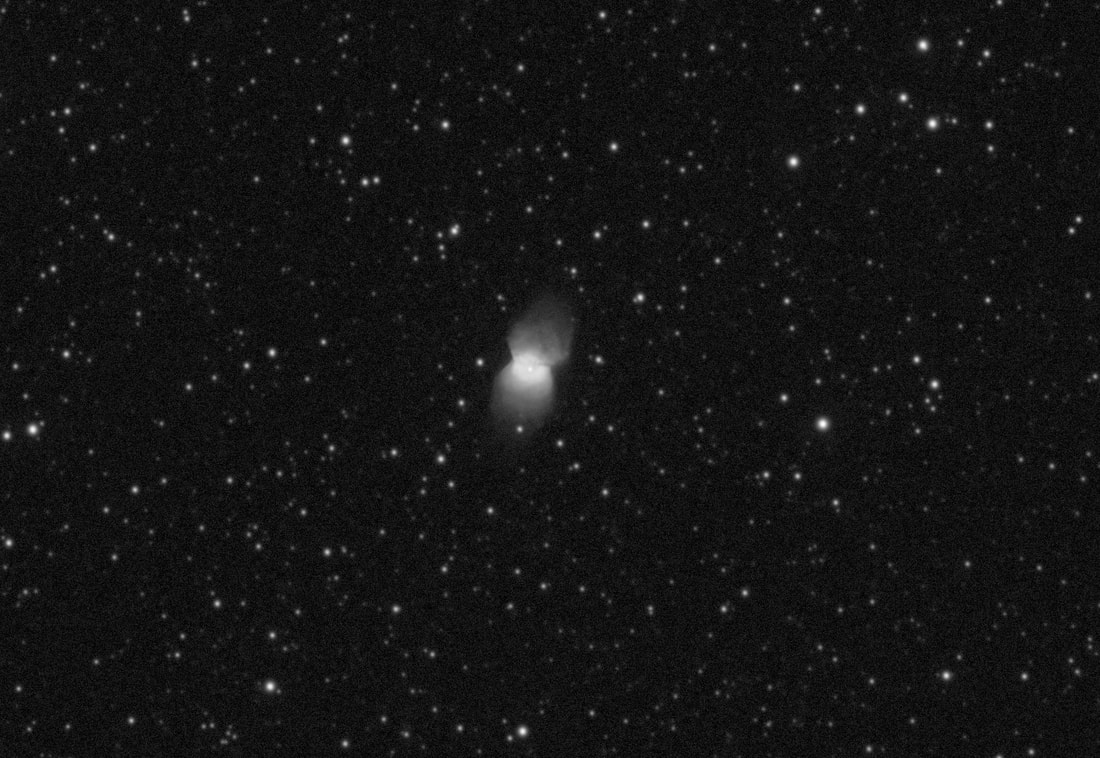NGC 2346
NGC 2346 is a bipolar planetary nebula in the constellation of Monoceros. It is informally known as the Butterfly Nebula. It has an unusually cool central star, which is a spectroscopic binary.
The central star is a binary star system consisting of an A-type subgiant and a subdwarf O star. The system, which has an orbital period of 16 days is also variable, probably due to dust in orbit around it. The dust itself is heated by the central star and so NGC 2346 is unusually bright in the infrared part of the spectrum. When one of the two stars evolved into a red giant, it engulfed its companion, which stripped away a ring of material from the larger star's atmosphere. When the red giant's core was exposed, a fast stellar wind inflated two ‘bubbles’ from either side of the ring.
The central star is a binary star system consisting of an A-type subgiant and a subdwarf O star. The system, which has an orbital period of 16 days is also variable, probably due to dust in orbit around it. The dust itself is heated by the central star and so NGC 2346 is unusually bright in the infrared part of the spectrum. When one of the two stars evolved into a red giant, it engulfed its companion, which stripped away a ring of material from the larger star's atmosphere. When the red giant's core was exposed, a fast stellar wind inflated two ‘bubbles’ from either side of the ring.
TARGET
Nomenclature: NGC 2346, Butterfly Nebula
Right Ascension: 07:09:22.52
Declination: -00:48:23297
Size: 124 arc seconds
EQUIPMENT USED
Twin APM TMB LZOS 152 refractors
10Micron GM2000 HPS mount
Twin QSI6120 CCD cameras
Astrodon filters
Nomenclature: NGC 2346, Butterfly Nebula
Right Ascension: 07:09:22.52
Declination: -00:48:23297
Size: 124 arc seconds
EQUIPMENT USED
Twin APM TMB LZOS 152 refractors
10Micron GM2000 HPS mount
Twin QSI6120 CCD cameras
Astrodon filters
IMAGE CAPTURE
Blue: 24x300"
Green: 25x300"
Red: 25x300"
Ha: 40x900" bin 1x1
OIII: 39x900" bin 1x1
Total Integration: 25 hours 55 minutes
Pixel scale: 0.266 arcsec/pixel
Field radius: 0.160 degrees
Capture dates: 27 January - 1 February 2023
Capture location: Fregenal de la Sierra, Spain
Blue: 24x300"
Green: 25x300"
Red: 25x300"
Ha: 40x900" bin 1x1
OIII: 39x900" bin 1x1
Total Integration: 25 hours 55 minutes
Pixel scale: 0.266 arcsec/pixel
Field radius: 0.160 degrees
Capture dates: 27 January - 1 February 2023
Capture location: Fregenal de la Sierra, Spain
IMAGE PROCESSING:
CCDStack and Photoshop
CCDStack and Photoshop
Ha image


